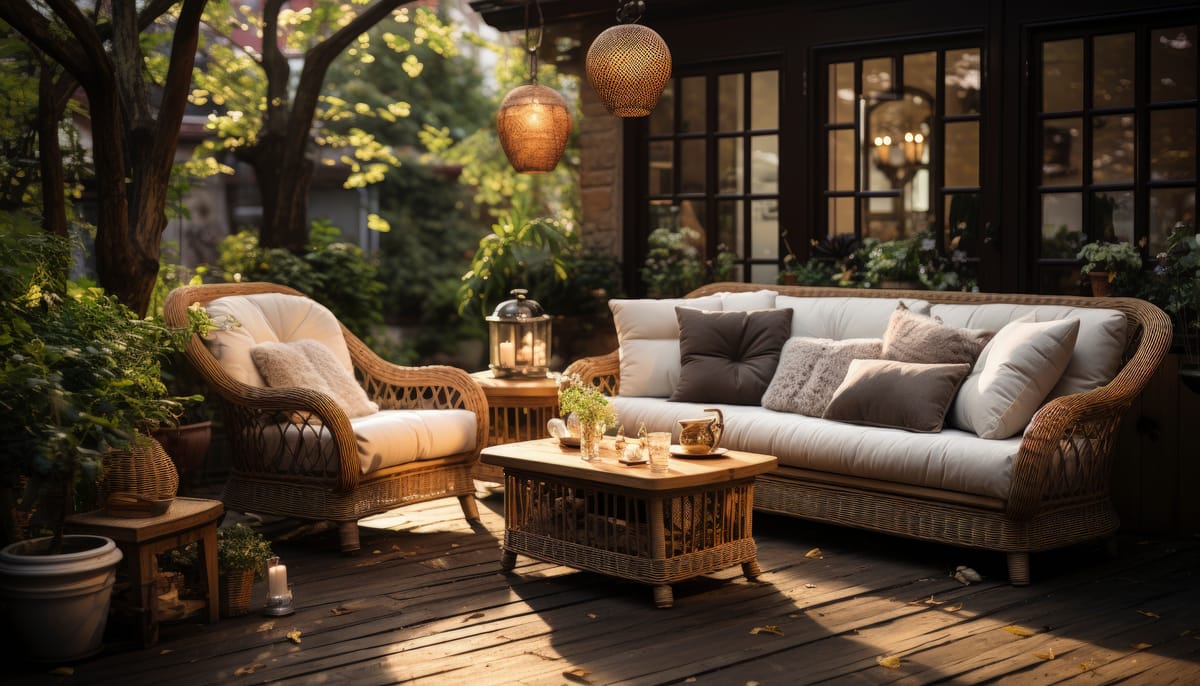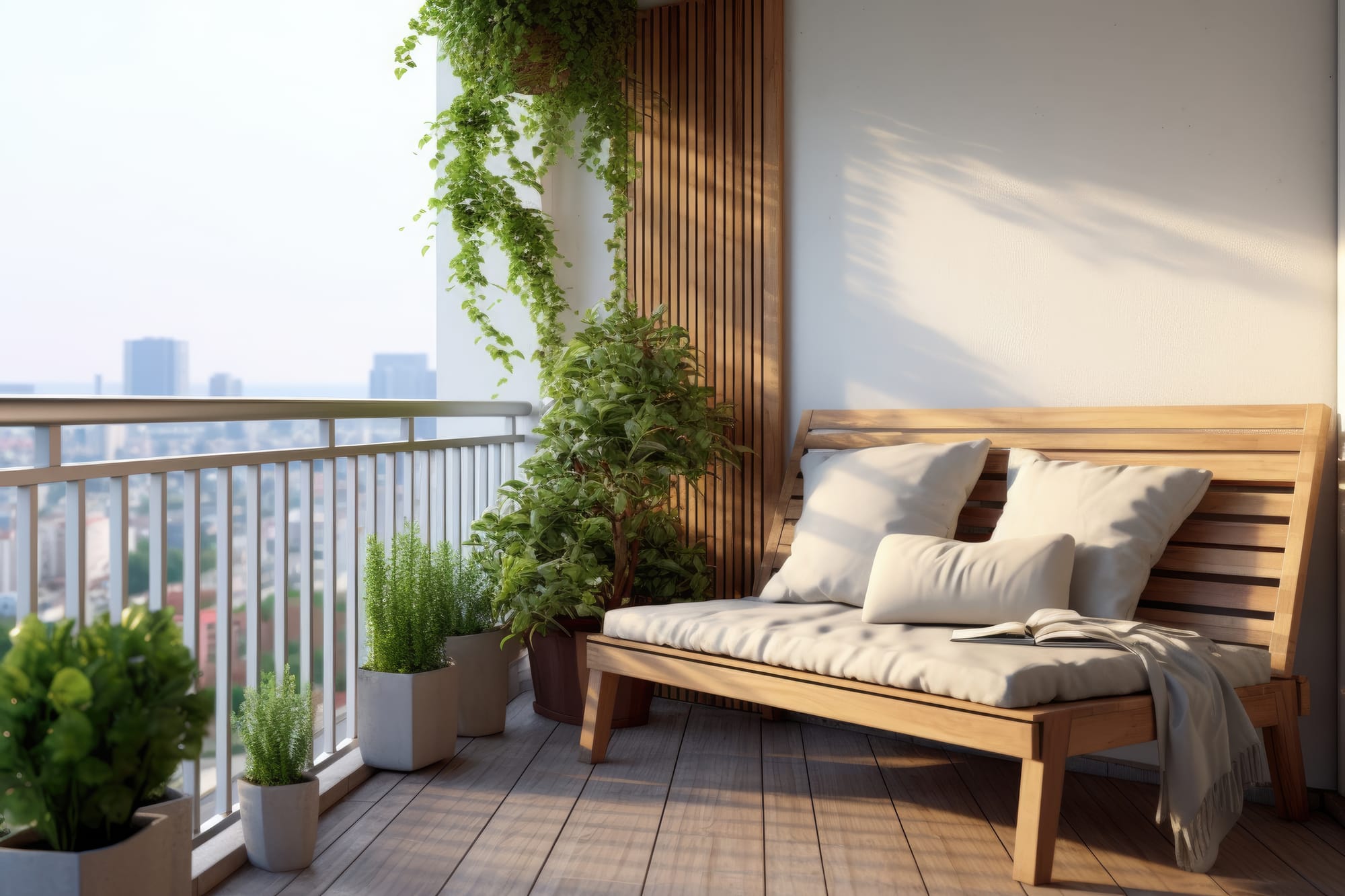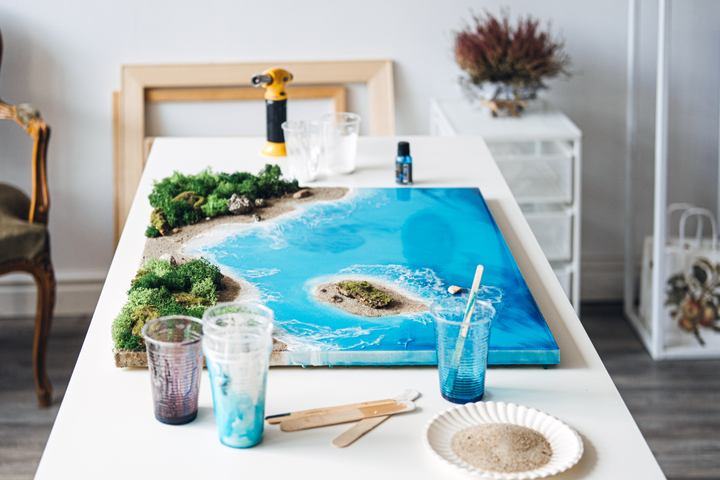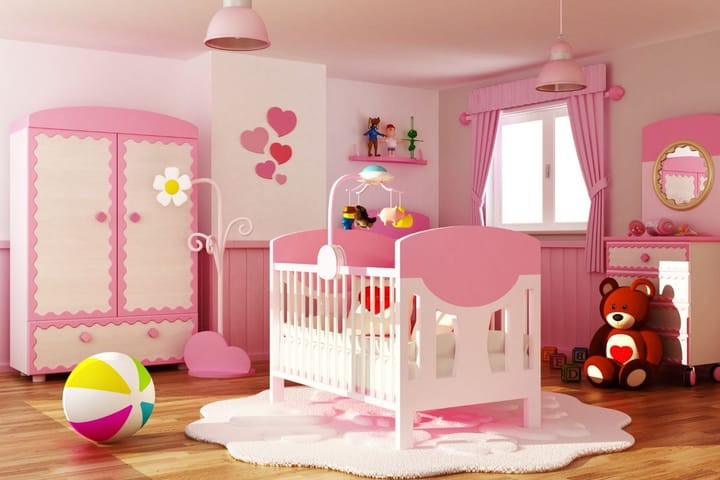Transforming Living Spaces: Expert Tips On Outdoor Decor
Transform outdoor areas into a personal retreat that enhances your home's beauty and functionality, reflecting your style and needs.

Enhancing the beauty and functionality of our homes extends beyond the confines of indoor spaces. The outdoor area presents a unique opportunity to create a personal retreat that reflects our style and needs.
This article explores the art of transforming outdoor spaces, offering professional advice and innovative ideas to elevate your garden, patio, or balcony. Whether you have a sprawling lawn or a cozy nook, these expert tips on outdoor decor will inspire you to reimagine your open-air living areas.
The Basics Of Outdoor Decor
Decorating outdoor spaces requires a different approach compared to indoor areas. The primary considerations for outdoor decor revolve around durability, weather resistance, and blending with the natural environment.

- Durability And Weather Resistance
Unlike indoor decor, outdoor furnishings and decorations must withstand various weather conditions, from harsh sunlight and rain to fluctuating temperatures. Opt for materials and fabrics designed for outdoor use, such as treated wood, metals, and all-weather fabrics. These materials ensure your decor lasts longer and retains its appearance over time.
- Harmony With Nature
The key to successful outdoor decor is to create a seamless transition between the home and the garden. This involves choosing colors, textures, and materials that complement the natural surroundings. Earthy tones, natural wood, and stone elements work well in most settings. Incorporating these elements helps create a cohesive and inviting outdoor space.
- Functionality And Comfort
Outdoor spaces are often used for relaxation and entertainment. Comfort should be a priority when selecting furniture and accessories. Consider ergonomic seating, ample cushioning, and practical layouts that facilitate movement and social interaction.
- Aesthetic Appeal
While functionality is crucial, aesthetic appeal should not be overlooked. A well-decorated outdoor space should reflect your style and enhance the overall look of your home. Play with different styles, patterns, and decorative elements to create a visually appealing area that resonates with your taste.
In the next sections, we will delve deeper into these aspects. You'll find specific tips and ideas to transform your outdoor space into a beautiful and practical extension of your home.
Planning Your Outdoor Space
Effective planning is crucial in transforming any outdoor area into a functional and aesthetically pleasing space. Before diving into purchasing decor or furniture, consider these key aspects:
- Assessing Your Space
Start by evaluating the size, shape, and characteristics of your outdoor area. Take note of aspects like sun exposure, wind patterns, and any natural elements that could influence your decor choices. For instance, installing diamond lattice window boxes can add charm and greenery, especially in areas that receive ample sunlight. This assessment will help you understand what is feasible in your space and what might need special consideration.
- Defining The Purpose
Think about how you intend to use your outdoor area. Will it be a space for relaxation, dining, entertaining guests, or a combination of these? Understanding the primary function of your space guides your decisions in terms of layout, furniture, and accessories.
- Creating A Layout
Draw a rough sketch of your outdoor space, marking out areas for different activities. Consider the flow of movement and how different areas will interact with each other. For instance, you might want a dining area close to the kitchen door, or a quiet corner set away for relaxation.
- Considering Privacy And Safety
Privacy can be a crucial aspect of outdoor spaces, especially in urban settings. Add elements like fences, screens, or tall plants for more seclusion. Also, ensure the safety of your space, particularly if you have children or pets. This includes securing any potential hazards and choosing child-friendly or pet-friendly decor.
- Budgeting
Before making any purchases, set a realistic budget for your outdoor decor project. This will help you prioritize essential items and avoid overspending. Remember, you don't have to complete everything at once; it's okay to develop your outdoor space gradually.
Addressing these considerations will lay a solid foundation for your outdoor decorating project. With a well-thought-out plan, you can efficiently utilize your space, ensuring it meets your needs and preferences.
Choosing A Theme
Selecting a theme for your outdoor decor is a crucial step in creating a harmonious and inviting atmosphere. A well-chosen theme not only enhances the beauty of your space but also reflects your style. Consider these tips when choosing a theme for your outdoor area:
- Reflecting Personal Style
Your outdoor space should be an extension of your personal taste. Whether you prefer a contemporary, rustic, or minimalist style, ensure the theme you choose resonates with your aesthetic preferences. This makes the space more enjoyable and personal to you.
- Complementing Your Home's Architecture
The theme should ideally complement the architectural style of your home. For instance, a modern minimalist theme might suit a contemporary home, while a rustic or vintage theme could be better suited for a traditional-style house.
- Considering The Environment
Take into account the surrounding landscape and climate. A beach-themed outdoor space might be perfect for a coastal home, while a woodland garden theme could suit a house in a more rural or forested area.
- Popular Themes
Some popular outdoor decor themes include:
- Modern Minimalist: Focuses on clean lines, simplicity, and a monochromatic color palette.
- Rustic Charm: Incorporates natural materials like wood and stone, and often features a more traditional or country feel.
- Tropical Oasis: Uses vibrant colors, lush greenery, and elements that evoke the feel of a tropical paradise.
- Bohemian Chic: Characterized by eclectic and artistic elements, mixing patterns, textures, and colorful fabrics.
- Classic Elegance: Emphasizes sophisticated and timeless designs, often with a formal garden layout.
Remember, you don't have to strictly adhere to one theme. It's possible to blend elements from different themes to create a unique and personalized outdoor space. A cohesive theme enhances the aesthetic appeal of your outdoor space and creates a welcoming atmosphere.
Furniture Selection
Choosing the right furniture is key to transforming your outdoor space into a comfortable and inviting area. When selecting furniture, consider durability, style, comfort, and maintenance. Here are some tips to help you make the best choices:
- Material Matters
The material of your outdoor furniture is crucial as it needs to withstand various weather conditions. Popular choices include:
- Wood: Offers a natural look and is durable if treated properly. Teak, cedar, and eucalyptus are good options for their resistance to weather and pests.
- Metal: Wrought iron, aluminum, and stainless steel are durable and can withstand harsh conditions. They offer a range of styles from classic to modern.
- Synthetic Resin: Wicker and rattan styles made from synthetic resin are lightweight, stylish, and can endure sun and rain.
- Plastic: Economical and low maintenance, plastic furniture is available in a variety of styles and colors.
- Style And Comfort
Your outdoor furniture should be both stylish and comfortable. Choose pieces that complement your chosen theme and invite relaxation. Consider ergonomically designed chairs and sofas, and add cushions for extra comfort.
- Size And Scale
Consider the size of your space and choose furniture that fits well without overcrowding. For smaller spaces, opt for compact or foldable furniture. Larger spaces can accommodate bigger sets, like sectional sofas or dining tables.
- Functionality
Think about how you will use your outdoor space. If you plan to dine outdoors, invest in a good-quality dining set. For relaxation and conversation, comfortable seating like lounge chairs or a sofa set might be more appropriate.
- Maintenance
Consider the amount of maintenance you're willing to do. Some materials require more upkeep than others. Wood might need regular treatment, while metal may require occasional painting to prevent rust. Synthetic materials are generally low-maintenance.
By carefully selecting your outdoor furniture, you can create a functional and visually appealing space that invites you to enjoy the outdoors. Keep in mind your theme, the practical use of the space, and how each piece of furniture will contribute to the overall ambiance you want to achieve.
Incorporating Plants And Greenery
When incorporating plants into your outdoor area, consider the climate and the amount of care you can commit to. Choose plants that thrive in your local weather conditions to ensure they grow well with minimal effort. For low-maintenance options, look into succulents or native plants, as they usually require less water and care.
The placement of plants is equally important. Use larger plants or trees to create shade in seating areas or to add privacy. Smaller plants and flowers can be placed in raised beds, hanging baskets, or decorative pots to add splashes of color. If space is limited, vertical gardens or trellises with climbing plants are excellent ways to incorporate greenery without taking up too much ground space.
Additionally, think about the seasonal changes in your area. Selecting a mix of perennial and annual plants ensures your garden remains vibrant throughout different seasons. Consider also the use of herbs or small vegetable plants, which can add a practical and sensory aspect to your decor. Fresh herbs look great and can be used in your kitchen, offering fresh flavors from your garden.
Lighting For Ambiance
The right lighting can transform your outdoor space into an enchanting area, especially as the sun sets. Start by considering the main function of your outdoor area. If it's for dining or entertaining, you might want brighter, more focused lights like overhead or pendant lights. For a relaxing, tranquil atmosphere, softer, diffused lighting such as solar-powered garden lights or LED string lights can be more appropriate.
When selecting lighting fixtures, consider both style and practicality. Lights that match your outdoor theme can enhance the overall decor. For example, lanterns can add a rustic or bohemian touch, while sleek, modern fixtures suit contemporary spaces. Also, think about energy efficiency and longevity. LED lights, while a bit more costly upfront, have a longer lifespan and are more energy-efficient in the long run.
The placement of lighting is key to achieving the desired effect. Pathway lights can guide guests through your garden or to your front door, while spotlights can highlight specific features like trees or statues. Don't forget about safety; ensure stairs and uneven surfaces are well-lit to prevent accidents.
Conclusion
Transforming your outdoor space into a beautiful and functional extension of your home is a rewarding endeavor. Remember, the key is to blend style, comfort, and practicality, allowing your outdoor space to become a cherished part of your home. Whether you have a vast garden or a small patio, these expert tips will help you enhance your outdoor living experience.




Comments ()